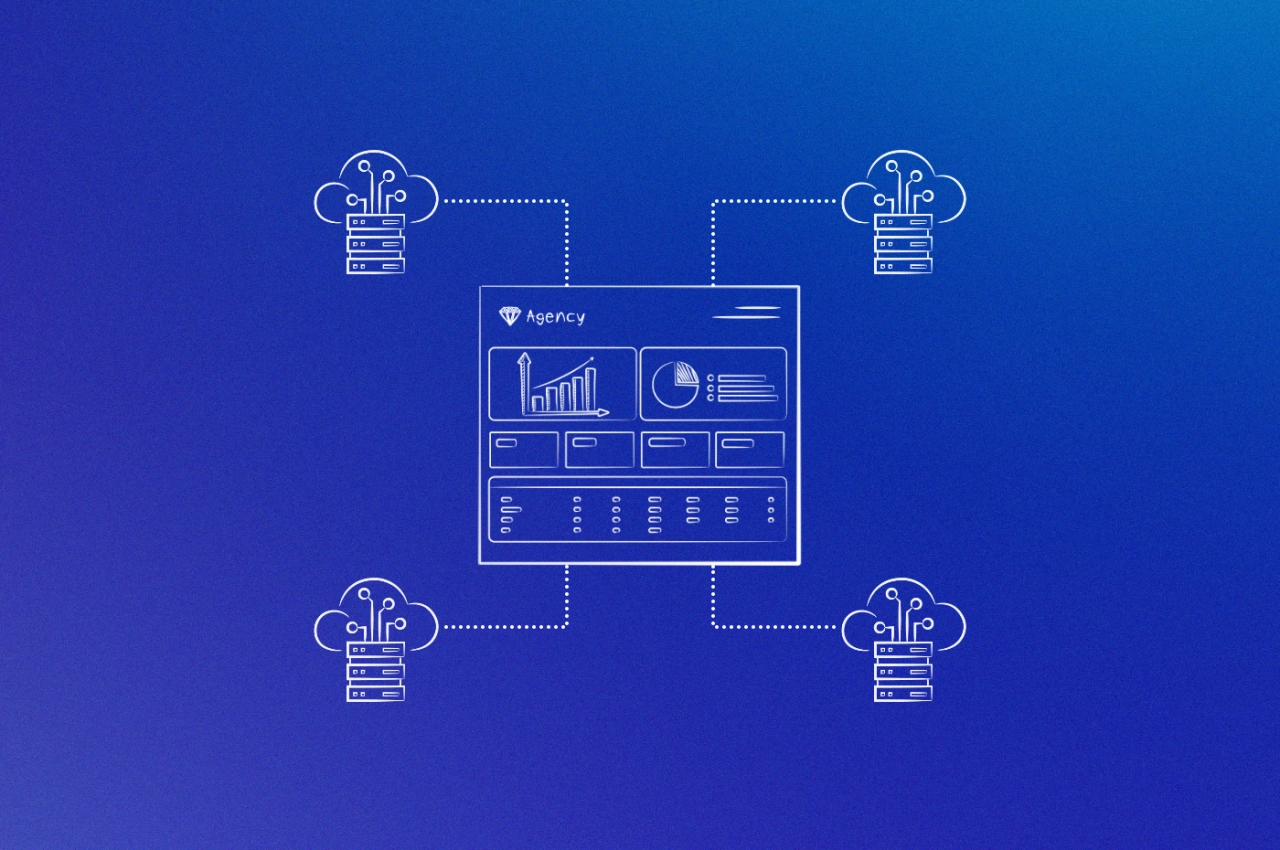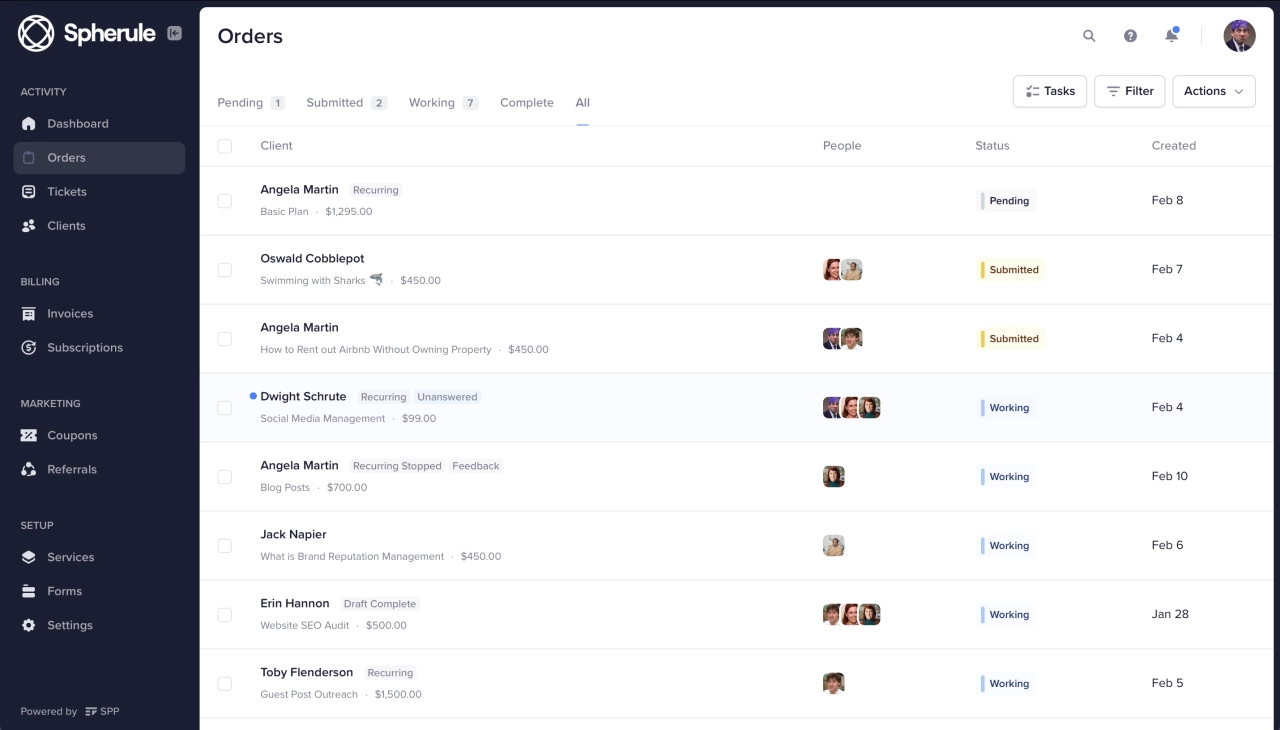- Reduce errors and improve client retention with consistent, professional reports delivered automatically
- A client report should be understandable, accurate, customized, and easily accessible for those involved.
- Free up your team to focus on strategy and growth instead of copying and pasting data between platforms.
Manual client reporting is silently draining your agency’s profitability. If you’re spending hours each week copying data from your CRM system to spreadsheets, creating presentations, and wrestling with manual processes, you’re not alone. For agencies struggling with time-consuming reporting processes, here’s how automated client reporting can transform your operations.
The tricky part is that many agency owners think reporting is just part of the job. You’ve probably told yourself, “It only takes a few hours per client each month.” But when you're managing dozens of clients, those hours add up fast. With that said, the right reporting automation can turn this operational burden into a competitive advantage.
Read on to find out which tools can automate your reporting process and how to implement them without disrupting your current client relationships.
How automated reporting transforms agency operations
Here’s what’s happening in most agencies right now: Your team spends 40+ hours per month manually pulling data from Google Analytics, Facebook Ads, and your CRM system. Then they copy-paste everything into spreadsheets, create PowerPoint presentations, and email individual reports to each client.
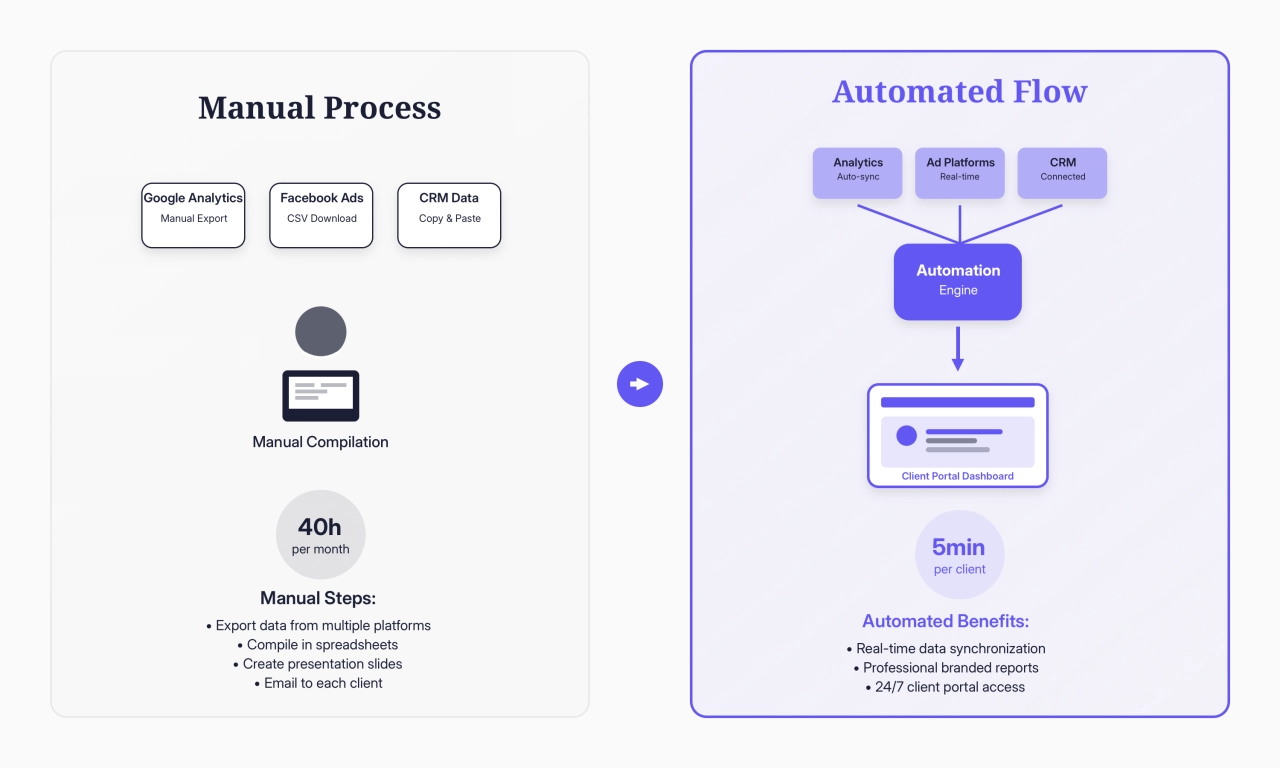
The tricky part is that this necessary work is actually costing you thousands in billable hours. Let’s assume you’re paying a team member $75/hour to compile reports for 50 clients. That’s $3,000 monthly in non-billable time that could be spent on strategy, client acquisition, or campaign optimization.
With that said, automated reporting flips this equation entirely. Instead of your team spending hours on data compilation, the right tools can sync all your client data in real-time and deliver professional reports directly to client portals. We’re talking about reducing 40 hours of manual work per month down to 5 minutes per client setup.
Why manual reporting is costing you more than you think
Generating reports is an essential task most agencies will have to do. After all, they want to show their clients that their money is well spent.
The biggest issue is that many rely on manual client reporting, be it in Google Sheets, Excel, or Airtable. They use Google Analytics to gather data, copy it into a spreadsheet, and use the data sources to generate charts and diagrams that clients can understand. This manual reporting process is time-consuming and prone to errors.
But generating reports on a weekly, monthly, or even quarterly basis is too much manual work once you have to do it for dozens of clients.
Here are three key reasons why agencies should automate their reporting:
Reduce costs: Copy-pasting isn’t the most efficient way to get things done, nor is it accurate. One little mistake and your reporting is wrong. Automation cuts down on costs and ensures fewer human mistakes.
Scale up: Once work picks up, agencies can quickly run out of available hands to handle it. By automating the reporting, they can focus on tasks that require a human touch.
Be consistent: Generating the same type of report for every client ensures that every team member is familiar with them. This makes it easy to set up processes, and ensure that data is delivered accurately.
The hidden costs eating into your agency’s profits
Manual reporting is a time-consuming and labor-intensive process that can be costly for agencies and businesses. The cost of manual reporting includes the time spent collecting and analyzing data, creating reports, and distributing them to clients.
According to AgencyAnalytics’ 2024 Marketing Agency Benchmarks Report, nearly half (48%) of surveyed agencies identify tracking billable hours as their most significant operational pain point. Promethean Research found that 65% of digital agencies price their services between $150 and $224 per hour.
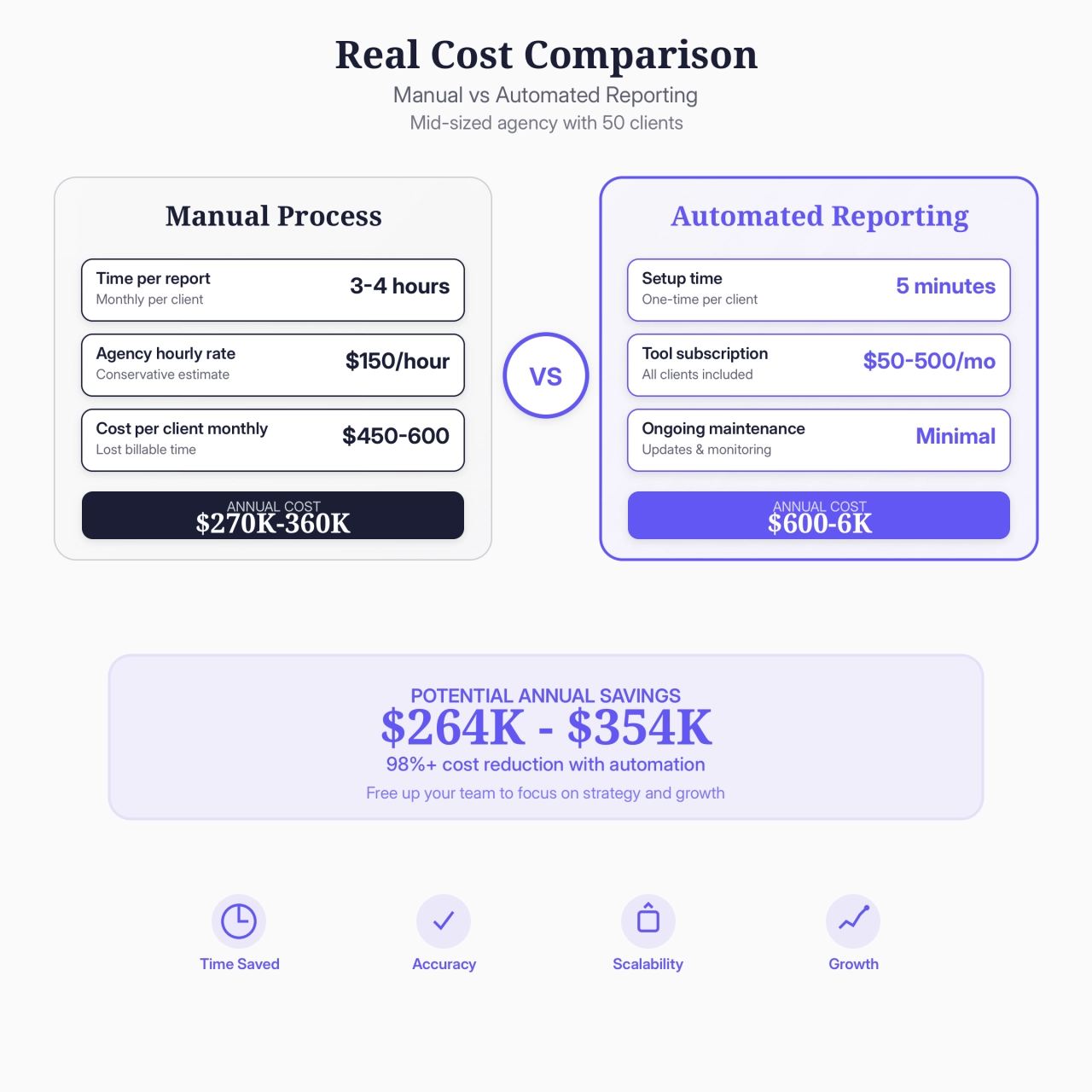
In contrast, automated reporting systems can cost anywhere from $50 to $500+ per month, making them a more cost-effective solution the more clients you serve.
With agencies, the most important thing is billable hours. So you lose a lot of billable hours. And within Europe and US, I think the average is about 80 to 100 euros or dollars an hour for a senior, which could be billing to the customer, but you can’t bill a thousand for a report, right?
 Justas Malinauskas,
Whatagraph
Justas Malinauskas,
Whatagraph
By switching to automated reporting, agencies can significantly reduce their operational costs and allocate resources more efficiently.
Automating your client reporting in 3 steps
I’m sure I don’t have to convince you that client reporting should be automated at this point, the question is: how do I do it?
Let me guide you through the process step-by-step.
1. Selecting KPIs that actually matter to clients
What is it that you want to display in your reports? To answer that question, we need to know what kind of client report we’re building, for example:
email marketing report
social media management report
Depending on the report type, the metrics you’ll display, and therefore the data sources, will be different. Effective data analysis is crucial in determining the right KPIs for these reports, enabling informed decisions and deeper insights.
When reporting, you must always ensure you consider both who the report touches first and last. If a CMO or COO reviews your deck, and it's just gibberish about DR scores, you are going to be the first vendor cut when budgets get tight. Always tie back to bottom line business impact.
 Jeremy Moser,
uSERP
Jeremy Moser,
uSERP
Generally speaking, all of them should have the following characteristics:
Understandable: Charts and graphs are nice, but what do they mean? The main idea of client reporting is not to display data, but to do conclusion from them. Create a summary section showing improvements/losses compared to the previous reporting period.
Accessible: If you’re one of those agencies who send reports on certain dates should reconsider if that is the best approach. Not everyone has the time to look at them right then. Modern reporting platforms provide access to a dashboard where they could look at their reports whenever they want.
White-labeled: If you want to impress your clients with your reporting capabilities, your reports should be white-labeled. That means they feature your branding, not that of the developer behind the reporting tool.
2. Choosing the right reporting tool for your agency
Automating client reporting has never been easier thanks to the many reporting software tools available today. The tricky part? With so many options, most agencies pick the wrong tool for their situation and end up frustrated six months later.
Before I show you the tools worth considering, let’s make sure you know how to evaluate them properly.
How to evaluate tools without getting burned
The tricky part is that most agencies pick a tool based on a demo or a recommendation, then wonder why it doesn’t work for their specific situation. Here’s how to avoid that mistake.
Start with what you actually need. Before you get excited about fancy dashboards, list every platform you currently pull data from. Let’s assume you’re reporting on Google Analytics, Facebook Ads, and Google Ads for most clients. That’s your "must-have" list. Everything else is nice-to-have.
With that said, here are the four questions that’ll determine which tool actually works for your agency:
1. Does it connect to YOUR data sources? Don’t just check if they have 70+ integrations. Check if they have YOUR integrations. Case in point: if you’re heavy on TikTok Ads but the tool only connects to Facebook and Google, you’re back to manual work for TikTok data.
2. How does pricing scale with your growth? Some tools charge per user, others per client, others per data source. Do the math on what happens when you go from 10 to 50 clients. I’ve seen agencies get surprised by a $500/month bill that started at $50.
3. Can your team actually use it? If your junior account manager can’t set up a new client report without calling you for help, the tool’s too complex. The best automation is useless if only one person on your team knows how to use it.
4. What’s the real ROI timeline? Here’s a quick calculation: If you’re spending 40 hours monthly on manual reporting at $75/hour, that's $3,000 in labor costs. If a tool costs $200/month and saves you 80% of that time, you’re saving $2,200 monthly.
Finally, test the tools before you commit. Most of them offer free trials, but don’t waste them on playing around. Set up one real client report using your actual data sources. Compare the numbers to what you see in Google Analytics. If they don’t match within 5%, dig deeper or move on.
Want to apply this framework right now? Use our interactive tool to get personalized recommendations based on your specific needs:
Answer a few questions to discover which reporting tool best matches your agency's specific needs and budget
Now, let’s look at the reporting tools I mentioned earlier.
Whatagraph
Whatagraph positions itself as a reporting solution for marketing agencies. The platform excels at creating professional, white-labeled reports that can be generated in minutes rather than hours, with templates designed around common agency workflows.
The platform offers team-based templates that allow you to standardize reporting across your entire agency while still customizing individual client reports. Key features include live link sharing with real-time data updates, automated report scheduling, and integration with 50+ marketing platforms. Reports can be delivered as PDFs, live dashboards, or embedded directly into client portals.
Best for: Mid-sized agencies (10–50 clients) who need professional presentation quality and want to maintain consistent branding across all client communications.
I think in early days, the biggest problem was that […] you really need to spend man-hours on preparing reports… But usually it took about, I think rule of thumb was about three to four hours per one report.
 Justas Malinauskas,
Whatagraph
Justas Malinauskas,
Whatagraph
AgencyAnalytics
AgencyAnalytics helps marketing agencies save time by automating their client reporting through custom dashboards that clients can access directly. The platform’s strength lies in its comprehensive approach to agency operations, combining reporting with rank tracking, call tracking, and project management features.
The tool offers 70+ integrations covering all major marketing platforms, from Google Analytics and Facebook Ads to lesser-known tools like CallRail and Unbounce. Features include automated report generation, white-label dashboards, goal tracking, and team collaboration tools. The platform also includes built-in rank tracking and call tracking capabilities, reducing the need for separate tools.
Best for: Full-service agencies who want an all-in-one solution combining reporting with client management and who serve clients across multiple marketing channels.
AgencyAnalytics provides easy to understand, transparent SEO reports for our clients at scale. It is great for internal tracking and coordination too.
 Harry Strick,
Ranked.ai
Harry Strick,
Ranked.ai
Databox
Databox allows agencies to connect all their data points and build dashboards to track performance across multiple platforms. What sets Databox apart is its focus on actionable insights rather than just data visualization, with features designed to help agencies identify trends and opportunities.
The platform supports 100+ integrations including SQL databases and custom API connections for maximum flexibility. Key features include benchmarking against industry standards, automated alerts for significant changes, and the ability to calculate custom metrics like ROI based on cross-platform data. The mobile app ensures clients can access their data anywhere.
Best for: Data-driven agencies who need advanced analytics capabilities and want to provide clients with industry benchmarking and predictive insights.
Pricing: Plans start at $47/month for 3 users and 10 data sources, scaling up based on data sources and team size.
Dashthis
DashThis is a specialized tool built for marketing agencies who need streamlined reporting solutions. It stands out with its fully automated reporting system that compiles data from multiple sources into ready-to-present dashboards, with a focus on simplicity and speed of implementation.
The platform features preset templates for SEO, PPC, social media, and email marketing reports that can be implemented with just a few clicks. Key capabilities include automated report scheduling, white-label customization, real-time data updates, and the ability to create multiple dashboards simultaneously. With over 40 integrations, it consolidates marketing data from all major platforms into a single view.
Best for: Agencies who prioritize ease of use and quick setup over advanced customization, particularly those serving clients with standard marketing needs across common platforms.
With Dashthis, you can create automated reports in three easy steps: Connect your marketing platforms, integrations, and data sources (Social media, Google Analytics, Google Ads, etc.); choose between report templates to track KPIs for SEO reporting, marketing campaigns, PPC, or social media, or start a report from scratch; the tool will gather all your most important KPIs into an automated dashboard so you can see your metrics in real-time.
 Elisabeth Dignard,
DashThis
Elisabeth Dignard,
DashThis
Looker Studio
Looker Studio (formerly Google Data Studio) is the most popular free tool for generating reports, especially when working within the Google ecosystem. While it requires more manual setup than dedicated agency tools, it offers unlimited customization and no per-client costs when using Google data sources.
The platform excels at creating highly customized reports and dashboards with Google Analytics, Google Ads, Search Console, and Google Sheets data. Advanced features include calculated fields, custom dimensions, and the ability to blend data from multiple sources. However, third-party connectors can be expensive, and the learning curve is steeper than specialized agency tools.
Best for: Budget-conscious agencies heavily invested in Google’s ecosystem, or agencies with technical resources who want maximum customization control over their reporting.
Pricing: Free for Google data sources; third-party connectors typically cost $50–300+ per month depending on the data source and connector provider.
3. Integrating reports into your client experience
Some reporting solutions allow you to send the reports via email. While that isn’t a bad option, I think it’s outdated. Let me put it this way: what does your inbox look like right now? Is it full of unread emails? I bet your client’s inbox is the same.
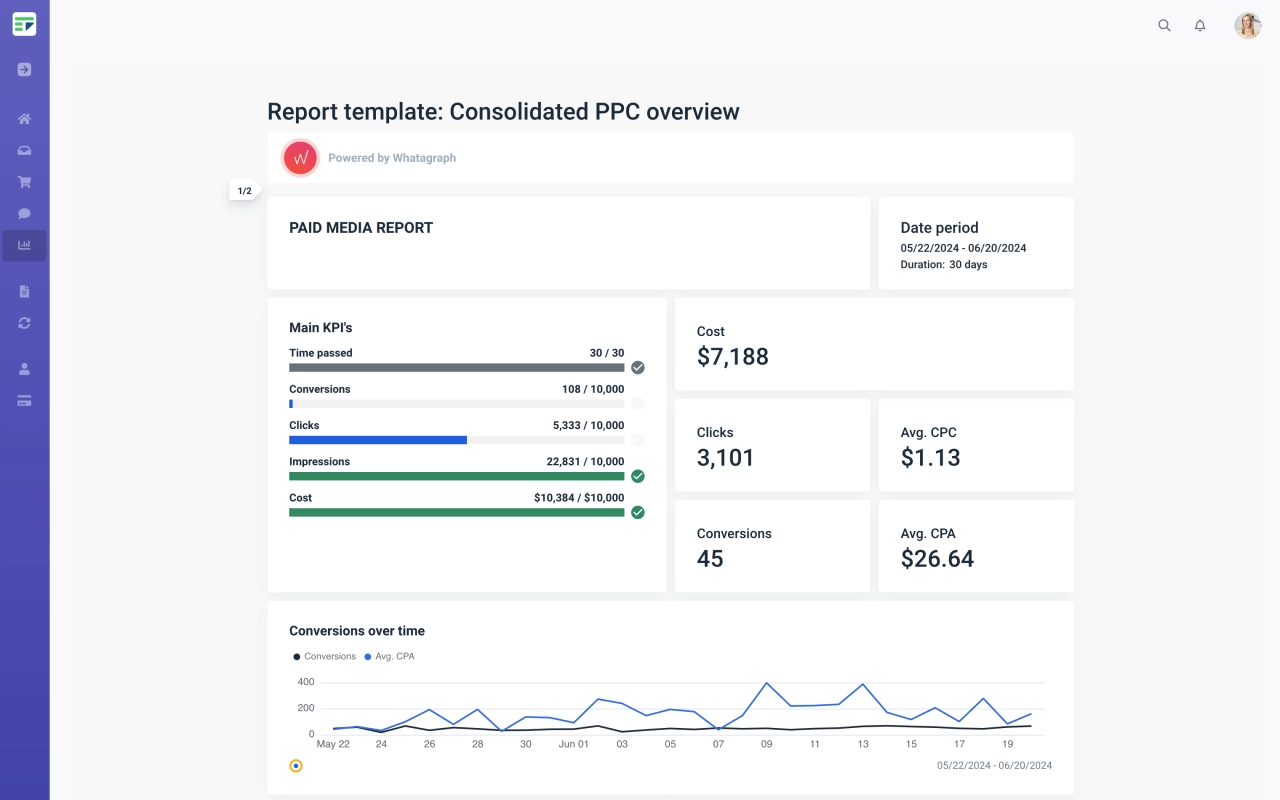
Instead of upsetting them because they didn’t see your reporting email, why not give them access to the report in a client portal? The biggest benefit is that they can log in at any time and visualize your reports.
Reporting Integrations



How to avoid the most common reporting automation mistakes
Here’s what I see most agencies mess up when they first automate their reporting: they pick a tool, connect a few data sources, and think they’re done. Then three months later, they’re dealing with angry clients because the numbers don’t match what's in Google Analytics.
The tricky part is that automation amplifies whatever problems you already have. If your Google Ads account isn’t properly tagged, your automated reports will show garbage data—just faster. Case in point: I’ve seen agencies lose clients because their automated dashboard showed $0 in conversions while the client could see actual sales in their Shopify account.
With that said, here are the three mistakes that'll kill your automation project before it starts:
Not cleaning your data first: You can’t automate messy data and expect clean reports. Before you connect anything, audit your Google Analytics goals, check your UTM parameters, and make sure your conversion tracking actually works.
Over-automating from day one: Don’t try to automate every metric and data source immediately. Start with 3–4 core KPIs that matter most to your clients—usually traffic, leads, and conversions. You can always add more complexity later, but you can’t easily remove it once clients expect to see 47 different metrics.
Forgetting the human element: Automation doesn’t mean “set it and forget it.” Your clients still need context about what the numbers mean. Include a monthly summary email explaining trends, highlighting wins, and addressing any concerning drops. The best automated reports still feel personal.
Tracking the ROI of your reporting automation
Let’s talk numbers, because your CFO is going to ask how much this automation actually saved you. And honestly, most agencies can’t answer that question because they never tracked their baseline.
Here’s what you should measure before and after automation:
Time savings (the big one): Track exactly how many hours your team spent on reporting last month. For most agencies, it’s shocking—often 15–20% of their total billable capacity. After automation, you should see this drop to under 5% within 90 days.
Client retention: This one surprised me. Agencies with automated reporting see much higher client retention rates. Why? Because clients can access their data anytime, they feel more in control and trust you more.
Upselling opportunities: When clients can see their results clearly, they’re more likely to increase their budget. Again, this goes back to trust. When they see your work pays off, they’re more likely to spend money.
The tricky part is measuring soft benefits like team morale and client satisfaction. But here’s a simple test: ask your team if they’d rather spend Friday afternoon creating reports or working on strategy. The answer tells you everything.
Your next steps to automated reporting success
Agencies have more tools than ever to choose from when it comes to generating and automating reports. Do keep in mind that they all look very similar. But the devil is in the details, as they say. Take your time when you check the different integrations the tools support natively, and if you can connect to the data sources you need.
Lastly, ensure that the reporting can also be connected to other tools you use, for instance a CRM. If you’re not using such a software yet, check out this post about the best CRMs for agencies.
